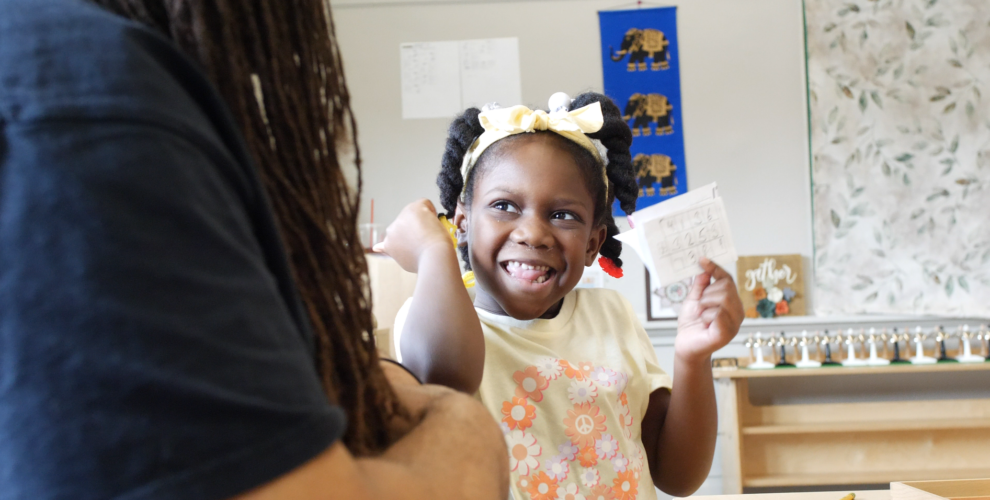The following information includes tips for meetings, parental advice for participating and navigating IEPs, IEP goals, how to navigate paperwork, how to navigate the law, and negotiating strategies to get what you want and what your child deserves.
Individual Education Program (IEP)
Under U.S. federal law, IEPs can be developed for children who are found to have “mental retardation, a hearing impairment including deafness, a speech or language impairment, a visual impairment including blindness, serious emotional disturbance, an orthopedic impairment, autism, traumatic brain injury, another health impairment, a specific learning disability, deaf-blindness, or multiple disabilities, and who, by reason thereof, needs special education and related services.” (IDEA, 1997 Regulations, Subpart A, §300.7) Young children who are experiencing developmental delays may also qualify.
The process works as follows:
Identification
Anyone who knows the child – including a Birth-to-3 provider, parent, child care provider, or physician – can make a referral for a child to receive an evaluation if the individual suspects that the child has a special need. The earlier the intervention, the better. Referrals from a Birth-to-3 provider mean that the child is already receiving services for his or her delay. Parents must sign a written consent form for a referral to be made.
Evaluation and Assessment
A team of experts (commonly identified as an IEP team), assess the child for each of the areas of concern. An IEP meeting is scheduled, and if the team determines that the child has exceptional educational needs, an IEP is written. Parents are an important part of planning the IEP. They discuss evaluation findings and determine how to best meet their child’s educational needs with the IEP team.
Individual Education Program goals are very important and are part of a blueprint that can lead to achieving long-term goals. IEP goals need to be written in any area that has been identified as an area of need on the “present level of performance” page. This page describes the student’s current academic abilities, social emotional state, motor skills, communication skills and health functioning, while also identifying other areas of need.
Once an area of need has been established, a goal needs to be created for that area. The special education teacher, along with parents and the general education provider, should be writing goals. Unfortunately, goals are often written by professionals in isolation and then presented to parents. In order to ensure parents’ concerns are addressed, parents should participate in goal writing so they understand why the goal was written, how it supports the long-term goal, and how progress will be measured. Parents’ goals for their son or daughter need to be respected and the team should be held responsible for guiding the child toward that long-term goal.
Placement in the Least Restrictive Environment
If the child meets certain criteria, the school system will offer a special program, placement or services to meet the child’s needs in the “least restrictive environment.” In most cases, children attend a regular classroom with an array of special services available. A special class for all or part of the day is another possibility, as is spending time in a resource room with a specialist, or having an aide help the child attend the regular class. Services may include physical, language or occupational therapy, as well as health monitoring by medical personnel.
Monitoring and Modification
After a plan is in place, teachers and parents must monitor the child’s performance. The IEP team can modify the plan as needed to provide additional services, or move the child to a different setting. Inclusion – also known as mainstreaming – is a common trend for children with special educational needs, but it doesn’t work for all children. Parents, teachers and therapists must communicate and work together to make certain that every child has access to the free, public education guaranteed by law.
Amy Bontempo is the Manager of Family and Community Engagement at Penfield Children’s Center. She supervises the Community Outreach Educator, Volunteer Coordinator, Parent Mentor Program, and Family Programs of which Penfield host over 60 per year. She has served on the Board of Directors for the Down Syndrome Association (DSAW) of Wisconsin since 2011 and previously served on the Volunteer Respite Committee for Children’s Service Society now part of Children’s Hospital of Wisconsin Community Services, and the Family Resource Connection of Milwaukee Co.
U.S. Department of Education. <http://idea.ed.gov/>
NACAC. North American Council of Adoptable Children. <http://www.nacac.org/>
Step Ahead at Age 3, A Guide for Families in Wisconsin, 1999 Revised Edition University of Illinois at Urbana –Champaign.



Leave a Reply